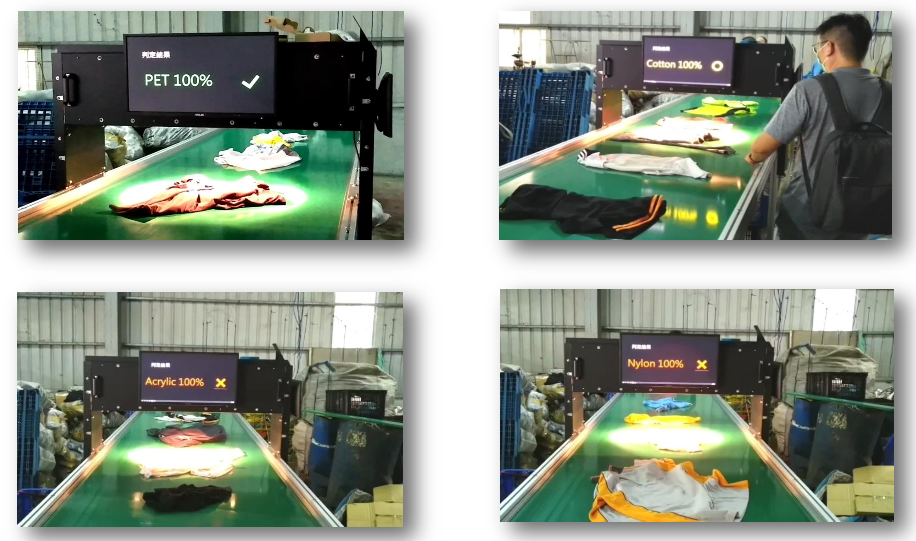The textile industry is the second most polluting industry in the world. Global clothing consumes more than 53 million tons of fiber every year, but less than 1% is recycled into recycled materials in the textile industry. Most of it is burned or buried as garbage, and then increasingly caused serious environmental pollution. At present, the environmental protection department of various counties and cities in Taiwan are also facing mountains of used clothes. In addition, governments of various countries have formulated policies of net-zero carbon emission in response to climate change. In addition, more than 100 textile brands around the world have responded to the concept of sustainable recycling and signed a joint statement that the goal of fully using r-PET was setting since 2030. It leads to the soaring demand for r-PET. However, related industries have no channels to obtain a large and stable source of recycled materials. The main reason is the lack of efficient sorting technology to quickly classify waste textiles for recycled utility value even if these are recycled.
Circular strategy: Sorting/collection
The key optical technology of by near-infrared spectroscopy and intelligent algorithm was developed to sort waste textiles by Pade Technology Corporation. Two supported equipment of intelligent sorting textile material, i.e. the large-scale and fixed-point type and the mobile type, was determined on the operation scales of clothing recyclers. The sorted old clothes provide a stable source of recycled materials for chemical fiber factories. They convert discarded old clothes into high-value raw materials to replace the use of upstream virgin fibers.
- By near-infrared light for rapid remote sensing, the sorting efficiency of each large-scale and fixed-point equipment could reach 740 metric tons/year.
- AI intelligent learning algorithm model possess a valid accuracy of up to 90%.
- Recognizable blended materials include polyester/ cotton/ nylon/ acrylic/ acetate/ wool.
- To provide cloud-based traceability from used clothes recycler to chemical fiber factories as the calculation basis of carbon footprint.
Benefit
- Resource recycling: About 40% of discarded used clothes in Taiwan are recycled every year
- Economic benefits: Recyclers can sort and classify waste textiles into reusable goods to create new business opportunities
- Environmental benefits: Recycled materials instead of virgin materials can save 64% of energy consumption, reduce 95% of water use, and reduce 73% of carbon emissions; reduce pollution from incineration or burial of discarded old clothes.

